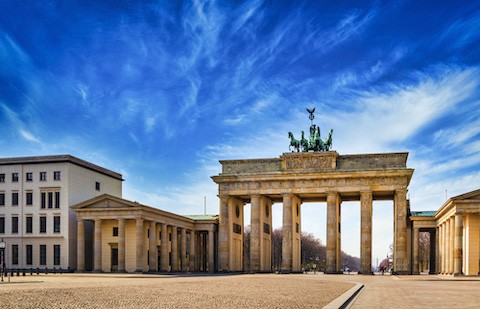
Brandenburg Gate
The Brandenburg Gate is the most important landmark of the city and the symbolic place for the unity of Germany. Built in the years 1788 to 1791 according to the designs of Carl Gotthard Langhans, it is modeled on the Propylaea of the Acropolis. In 1793, the Brandenburg Gate was expanded with the addition of Johann Gottfried Shadow's Quadriga. While today the Brandenburg Gate is a symbol of unity, during the time of the GDR it was one of the symbols of German division.